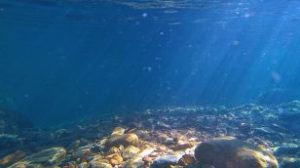The US space agency’s goal is twofold: to understand the nature of the oceans that exist on other planets and to develop technologies to operate in extreme conditions. UNESCO study of the world’s oceans is important for preserving a sustainable climate and ecosystems.
The ocean depths and space have much in common: the environment hostile to humans does not allow him to survive without special devices, albeit different ones. According to NASA, conditions on the ocean floor are similar to those encountered on some planets in the solar system. You might even get a hint where to look for traces of extraterrestrial life.
The ocean bears the brunt of the environmental crisis and has become a giant storehouse of heat and carbon. As a result, the ocean is warming and acidifying, polar ice is melting and global weather patterns are changing. Both ocean ecosystems and the people who depend on them suffer from this, the UN press service reports.
Knowing the depth and topography of the seafloor is essential to understanding ocean faults, currents, and tides. This data helps predict seismic and tsunami risks and identify natural features and fisheries that need protection. Bottom topography should also be taken into account when planning the construction of infrastructure facilities and developing effective responses to disasters such as oil spills, plane crashes and marine wrecks.
In addition, studying the seafloor is critical to assessing the impacts of climate change, including predicting rising sea levels or sea temperatures.
Scientists expect that in the future they will be able to speed up this process through the use of new technologies. For example, while sonars used to be attached to a ship, today scientists can control them from a distance, like drones. This allows you to map hard-to-reach areas and also significantly reduces the cost of the project.
The ocean at depths of more than five kilometers is considered an ultra-abyssal zone, an inaccessible abyss, the “zone of Hades” (named after the ancient Greek god of the underworld). The bottom there is pitted with crevices and basins.
The legal basis for a conscious relationship with the ocean was laid forty years ago, when the UN Convention on the Law of the Sea was signed. In 2017, UNESCO, in partnership with the Japanese Nippon Foundation, launched a project to study the seabed. In five years, it was possible to study and map 14 percent of the bottom area.





